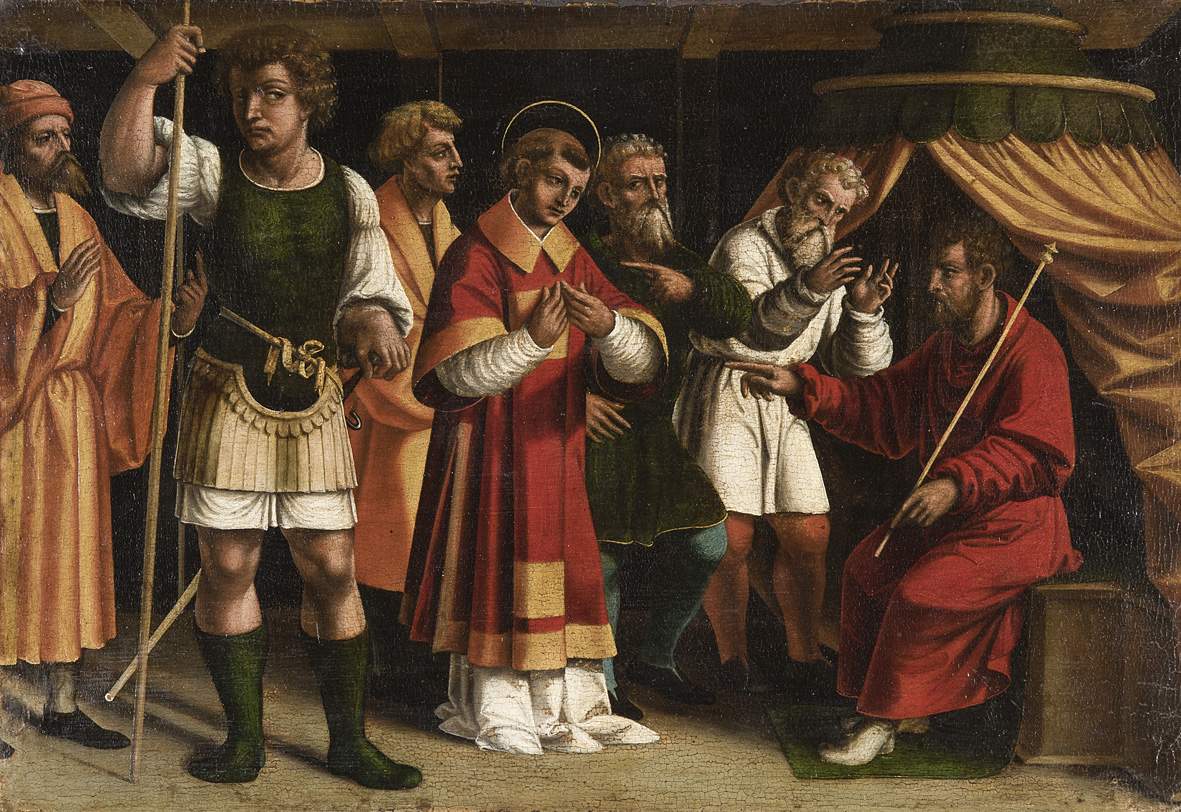From October 28, 2018 to February 17, 2019, the Pinacoteca Cantonale Giovanni Züst in Rancate (Canton Ticino, Switzerland) is hosting the exhibition The Renaissance in Ticino Lands 2. From Territory to Museum, a kind of continuation of the exhibition The Renaissance in Ticino Lands. From Bramantino to Bernardino Luini, which was also held at the Pinacoteca Züst in 2010. The exhibition, curated by Giovanni Agosti and Jacopo Stoppa, with the occasion of the European Year of Heritage, wants to investigate the phenomenon of the dispersion and return of works of art to their territory, to the territory for which they were commissioned and created and from which they then moved away, either by choice of the owners or temporary custodians, or as a result of external events, going to feed the official and unofficial art market. In particular, the review focuses on the historical period of the Renaissance in the Ticino lands, starting with the occasion of the recovery of a 1526 panel by Francesco De Tatti (documented from 1512 to 1527), a Saint Stephen before the Judges purchased on the antiquarian market by the Pinacoteca and originally painted for the Parish Church of Santo Stefano in Rancate.
Francesco De Tatti was the major Varese painter of the Renaissance, and the exhibition also aims to deepen the figure of the artist through a selection of his works (including drawings) and with comparisons aimed at defining his visual culture: paintings by the great Bernardo Zenale (a Trevigliese painter and architect, long active in Leonardo’s Milan) in whose shadow De Tatti must have been trained; works by Defendente Ferrari and Martino Spanzotti, an artist active in Piedmont but from a Varese family; and prints from the workshop of Raphael, to whose world De Tatti looked early on. Also confirmed in the exhibition is theImago pietatis from the Monte di Pietà in Milan, indicating the range of De Tatti’s patrons in the capital of the Duchy.
A special section will present Pinacoteca Züst’s new acquisition, the Santo Stefano before the judges. Alongside the focus on De Tatti, the exhibition aims to offer to the public’s admiration some particularly significant examples of works that left Canton Ticino either for domestic destinations (such as the nucleus of wooden sculptures and stained glass, generously granted by the Landesmuseum in Zurich) or for foreign locations, including Italy itself. From England will also come to Rancate the altarpiece by Bernardino Luini, now in a church in Orford, Suffolk, but executed for Santa Maria degli Angeli in Lugano. Alongside these prestigious loans there will be an exhibition of drawings (from Leo von Klenze to Johann Rudolph Rahn) and old photographs that can help to give an account of the original consistency of Ticino’s artistic heritage before it fell victim to the dispersal process that deprived the territory of too many of its works.
The exhibition is open Tuesday through Friday from 9 a.m. to noon and 2 p.m. to 6 p.m., Saturdays, Sundays and holidays from 10 a.m. to noon and 2 p.m. to 6 p.m. Closed Mondays, Dec. 24, 25 and 31. Tickets: full price 10 Swiss francs, reduced pensioners, students and groups 8 Swiss francs. For info visit the Pinacoteca Züst website.
Pictured: Francesco De Tatti, Saint Stephen before the Judges (1526)
 |
| A focus on Ticino's lost Renaissance heritage in Rancate |
Warning: the translation into English of the original Italian article was created using automatic tools. We undertake to review all articles, but we do not guarantee the total absence of inaccuracies in the translation due to the program. You can find the original by clicking on the ITA button. If you find any mistake,please contact us.